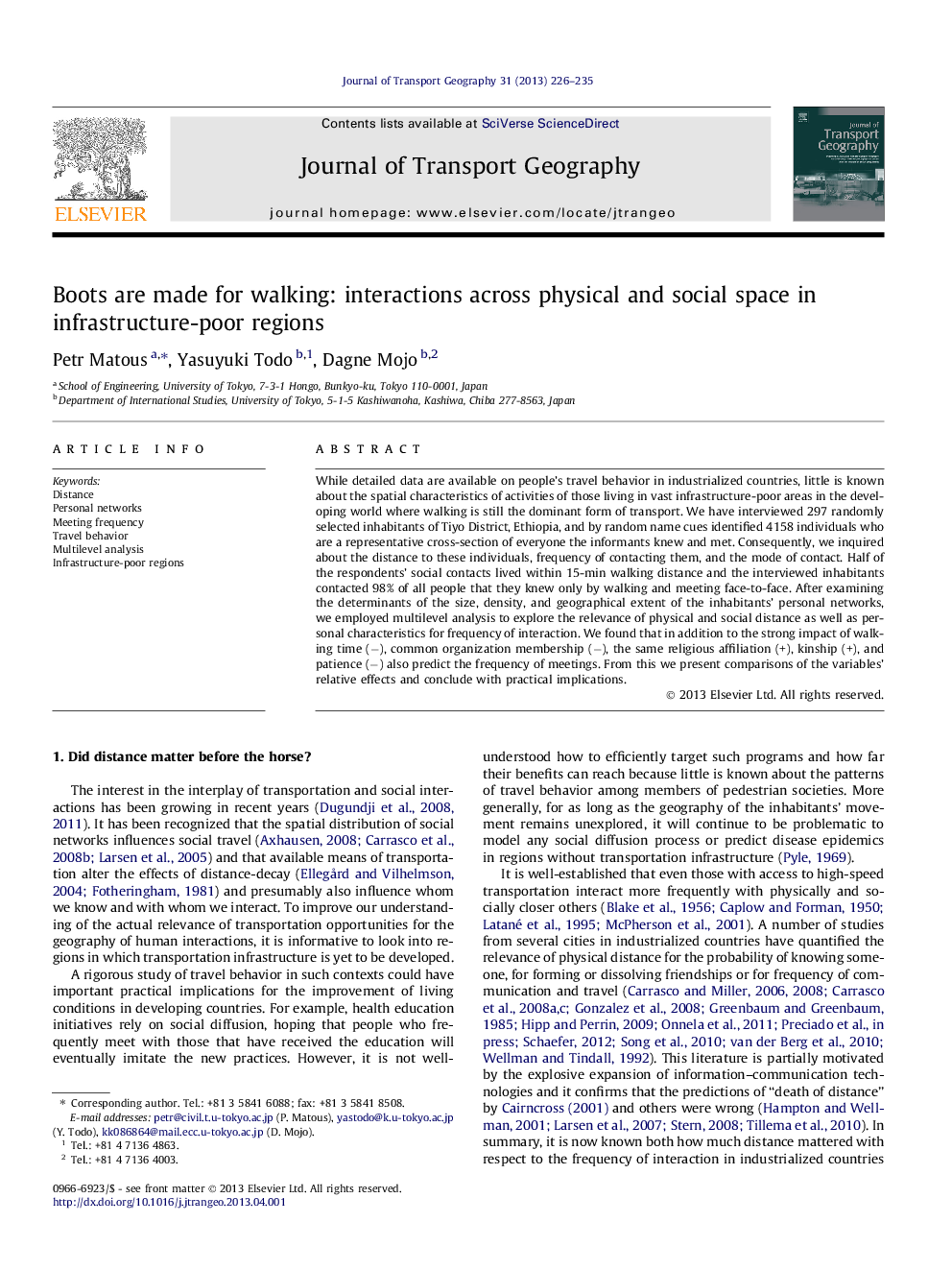| Article ID | Journal | Published Year | Pages | File Type |
|---|---|---|---|---|
| 7486481 | Journal of Transport Geography | 2013 | 10 Pages |
Abstract
While detailed data are available on people's travel behavior in industrialized countries, little is known about the spatial characteristics of activities of those living in vast infrastructure-poor areas in the developing world where walking is still the dominant form of transport. We have interviewed 297 randomly selected inhabitants of Tiyo District, Ethiopia, and by random name cues identified 4158 individuals who are a representative cross-section of everyone the informants knew and met. Consequently, we inquired about the distance to these individuals, frequency of contacting them, and the mode of contact. Half of the respondents' social contacts lived within 15-min walking distance and the interviewed inhabitants contacted 98% of all people that they knew only by walking and meeting face-to-face. After examining the determinants of the size, density, and geographical extent of the inhabitants' personal networks, we employed multilevel analysis to explore the relevance of physical and social distance as well as personal characteristics for frequency of interaction. We found that in addition to the strong impact of walking time (â), common organization membership (â), the same religious affiliation (+), kinship (+), and patience (â) also predict the frequency of meetings. From this we present comparisons of the variables' relative effects and conclude with practical implications.
Related Topics
Life Sciences
Environmental Science
Environmental Science (General)
Authors
Petr Matous, Yasuyuki Todo, Dagne Mojo,
